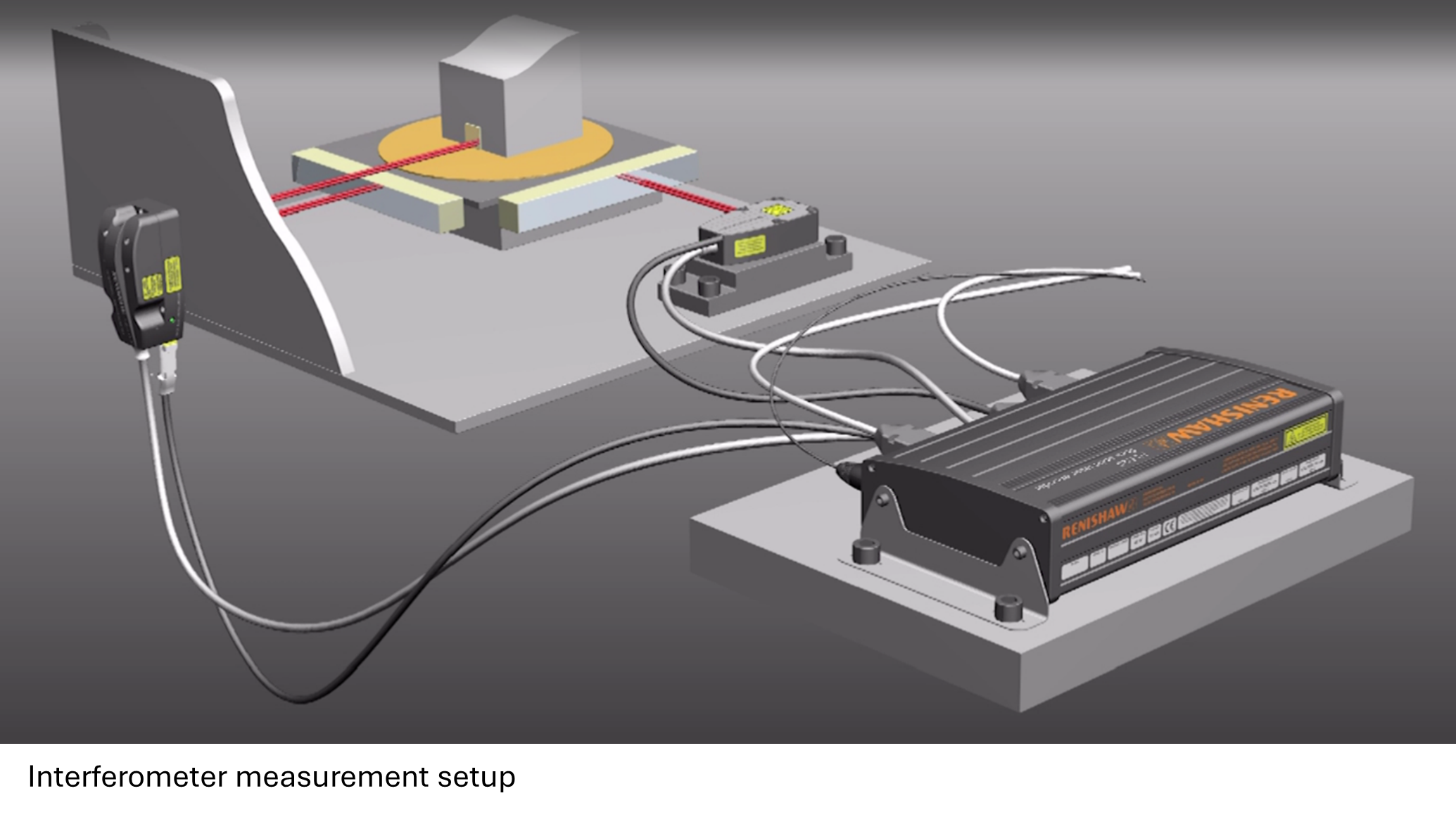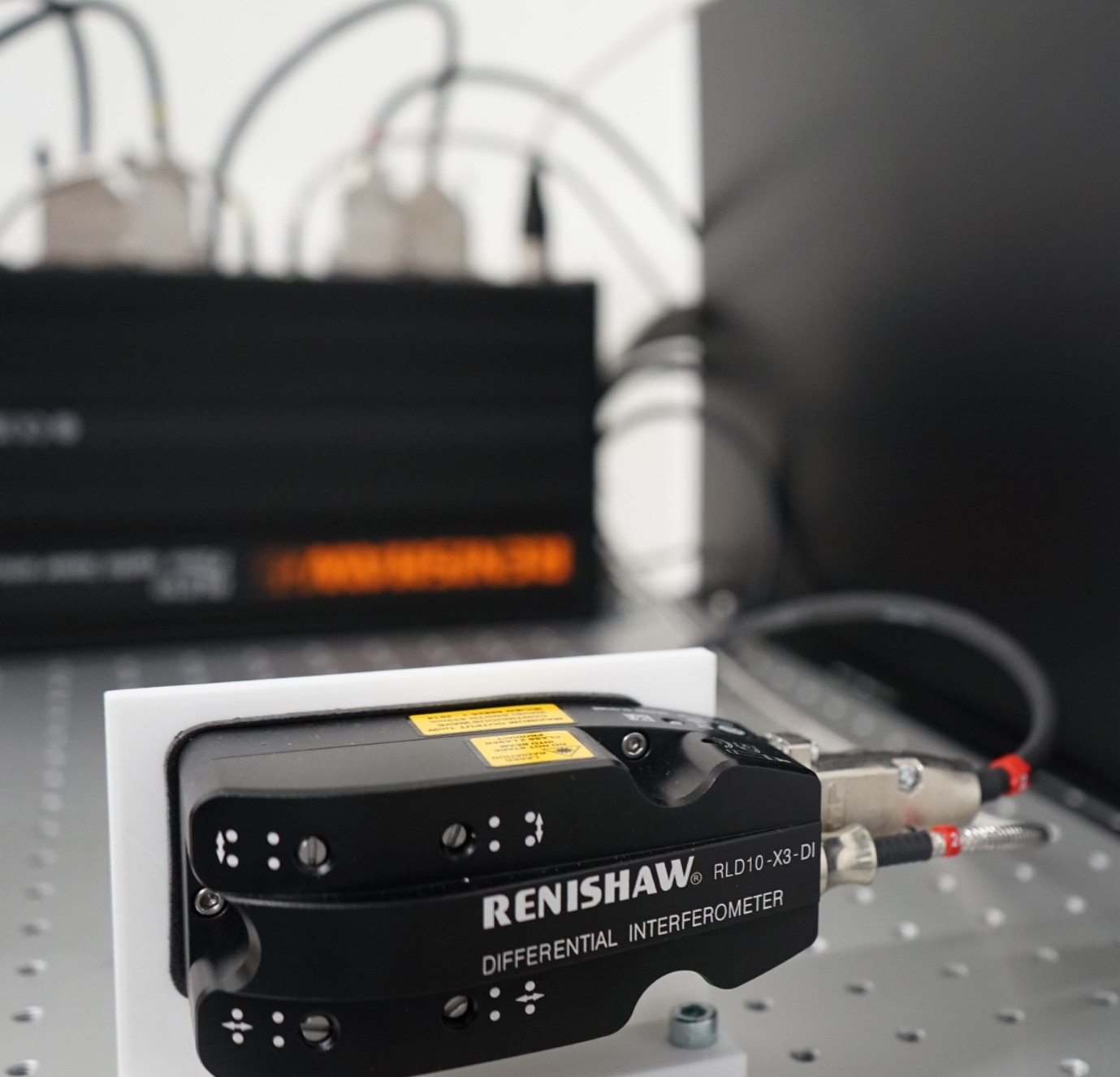Laser Interferometer
A laser interferometer is the gold standard for high-precision length measurements. It works by splitting a laser beam into a measurement path and a reference path, then comparing them through interference patterns. This technique enables exceptionally accurate distance measurements, making it indispensable in scientific and industrial applications.
The accuracy of the measurement is dependent on the homogeneity of the properties of the air in both measurement paths (the light traveling speed trough air is dependent on the temperature, humidity and air pressure) as well as the stability of the laser frequency.
Our laser interferometer measurement system is composed of a helium neon laser (class 2) and two measurement heads to be able to measure in two axes simultaneously. One laser head is configured in differential measurement paths, which allow the compensation of environmental changes of the air properties. The system not only allows highly precise measurements (the laser stability <5·10-9 m/m allows a drift through 8 hours of measurement time below ± 3 nm) but also enables fast measuring times, which is necessary for the development of our high-speed positioning systems with velocities of up to 1000 mm/s in.
These specifications are necessary for the characterization and optimization of our high precision positioning systems with highly efficient control systems to verify the extremely challenging positioning accuracy and repeatability aims in the nanometre range.
One use-case of this measurement technology can be seen in the Creative Engineering Lab project about the development of the High-precision Dynamic Linear Stage. There it was used by the MSc Precision Engineering students to verify the optical encoder feedback and measure the accuracy and repeatability of the prototype the students developed during the creative engineering lab course.


